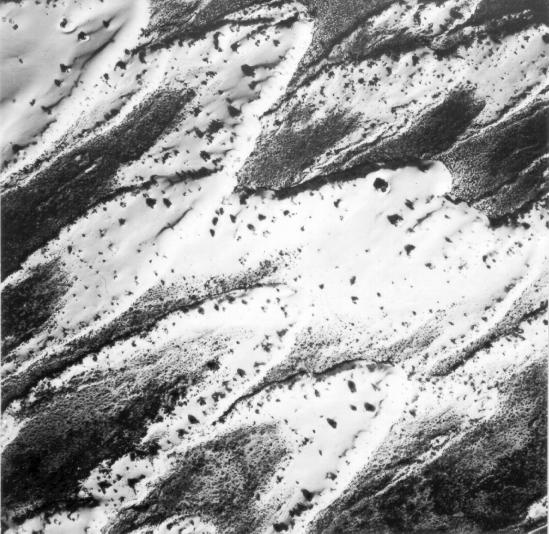Morphology of Dunes
Parabolic
If the wind becomes much more intense then the blowout becomes larger and its leeward rim migrates downwind leaving trailing arms on either side. In plan view the dune is U-shaped or V-shaped. It is a mound of well sorted, very fine to medium sand with elongate arms that extend upwind behind the central dune. Slip faces occur on the outer side of the dune. They occur in semi arid areas where precipitation is common or the moisture is retained in the near surface. They are associated with vegetation.
They are a few 10's metres high. Compound forms have several sets of trailing arms. Complex forms are subsidiary superposed, or coalesced forms, usually barchanoid or linear shape.
 |
Parabolic Dune Source of the image M Ritter |
Lunette
These are crescent shaped and are dominated by clay sized particles rather than sand. They are common in the semi arid regions, e.g. around pans in north central Kalahari Desert, Botswana. Confined to areas that have enough rainfall to introduce clays and slats as runoff.
Coppice/nebkhas
These are isolated shrubs or vegetation clumps in deserts. They are especially common along temperate coasts, and they help to stabilize dunes.
Climbing Dune
These are made up of loose, well sorted, very fine to medium sand piled against a rock face and are encroaching on the summit.(Desert Process Workings Group). They range from 1metre to 100's metres in height and breadth. Accumulation gradually increases at the base building a ramp constantly being enlarged by oncoming dunes. They are wind packed on the upwind slope. They may develop moats around them if they are greater than 30 degrees on the upwind slope.
Falling
These comprise well sorted, loose, very fine to medium sand and they develop on the downward side of topographic highs, hills, scarps etc. They range from 1metre to 100's metres in height and breadth. The sand gathers in the lee area and eventually forms a ramp that extends from higher elevation to lower surface. They are elongate dunes that taper downwind, and are feeders for dune fields. They can migrate into barchans or barchanoids.


